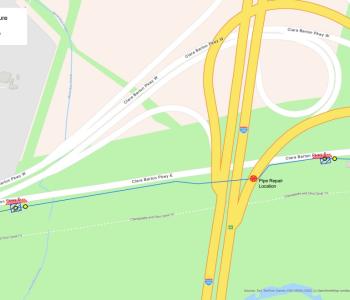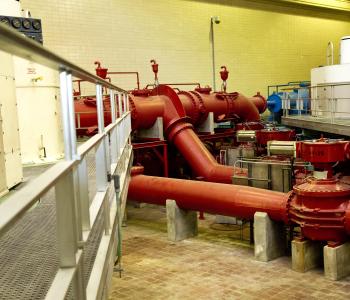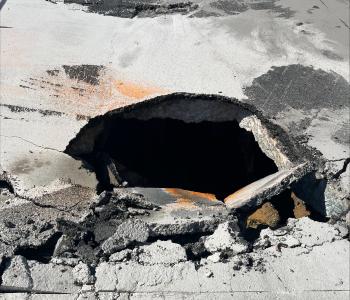DC Water Expands Backwater Valve Rebate Program to Help Residents Protect Properties from Flooding
DC Water is expanding its Backwater Valve Rebate Program to help more District customers protect their properties from flooding. The valve rebates were previously offered to residents of two neighborhoods with a history of flooding, Bloomingdale and LeDroit Park. Now, DC Water is accepting applications from residents of other neighborhoods that experienced severe flooding during the record rainfall on September 10, 2020. A backwater valve prevents wastewater from entering a building during surcharges of the public sewer system or back-ups caused by storms.
“This weekend I toured some of those hard hit neighborhoods with Mayor Bowser and met with residents who spoke about how they were impacted by the flooding and about the damage they suffered,” said DC Water CEO and General Manager David L. Gadis. “It was a very difficult day for many of our customers, and I told them we will do everything we can to help them protect their properties for this type of flooding in the future.”
The District’s sewer system performed as designed on September 10, but in some areas the system was overwhelmed by the large volume of stormwater. When that happens, some stormwater and sewage in a combined sewer system can be forced back up and into basements as the water fills the sewer lines in the street.
After a series of summer storms caused the sewers to surcharge in Bloomingdale and LeDroit Park in 2012, DC Water accelerated construction of the First Street Tunnel to add 8 million gallons of combined sewage storage capacity. The First Street Tunnel was placed into service in 2016 and increases the capacity of the sewer system to withstand a 5-7 year storm. The tunnel filled to capacity on Thursday, but mitigated the impact of the storm in some areas that experienced flooding in 2012.
Currently, DC Water is building the Northeast Boundary Tunnel which will add 90 million of additional capacity for combined sewage. The NEBT will help reduce overflows to the Anacostia River and provide additional flooding relief for low-lying neighborhoods. When it is completed in 2023 the tunnel will bring the capacity of the system up to a 15 year storm. More information about the tunnel system and how it is reducing flooding can be found by visitingwww.dcwater.com/cleanrivers.
More information about applying for the backwater valve program can be found on the DC Water’s website at dcwater.com/backwatervalves. Applications are typically resolved in about a week after consultation with engineers to determine if the valve will be of use to prevent flooding on the property.
DC Water has also compiled answers to some frequently asked questions about the flooding which are posted at www.dcwater.com/FloodFAQ.








